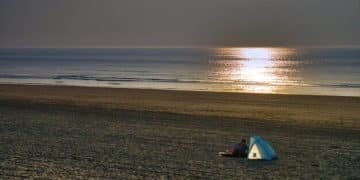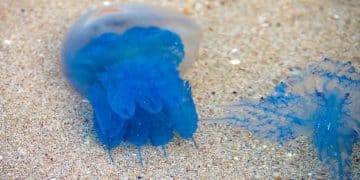Beach First Aid: Essential Skills and Supplies for Common Injuries
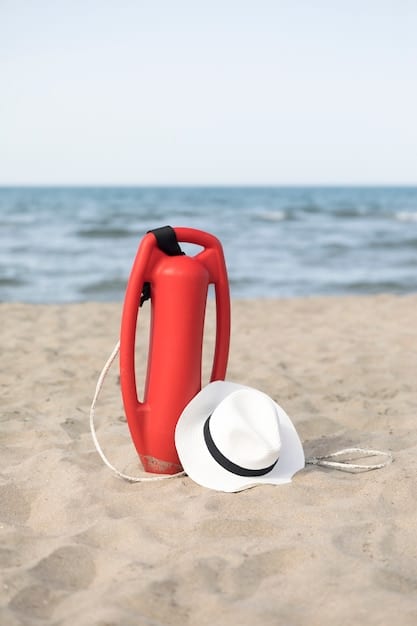
Beach first aid involves having the knowledge and supplies to address common injuries like sunburns, jellyfish stings, cuts, and dehydration, ensuring a safe and enjoyable beach experience.
Hitting the beach for some sun and fun? Don’t forget that accidents can happen. This guide covers essential beach first aid skills and supplies to keep you and your loved ones safe.
Understanding the Importance of Beach First Aid
Before diving into the specifics, let’s understand why beach first aid is so crucial. Beaches, while relaxing, present unique hazards. From scrapes and cuts to more severe incidents like jellyfish stings or heatstroke, being prepared can make all the difference.
Knowing the basics of first aid can help you respond effectively until professional medical help arrives. A well-stocked first aid kit and the knowledge to use it can prevent minor injuries from becoming major problems.
Common Beach Injuries
Understanding the types of injuries that commonly occur at the beach will help you prepare accordingly.
- Sunburn: Overexposure to UV rays can cause painful burns.
- Cuts and Scrapes: Sharp shells or rocks can cause cuts.
- Jellyfish Stings: Contact with jellyfish can cause painful stings.
- Dehydration: Losing fluids through sweat can lead to dehydration.
- Heatstroke: Prolonged exposure to high temperatures can cause heatstroke.
By being aware of these common risks, you can take preventive measures and be ready to administer first aid if an injury occurs. A proactive approach to beach safety ensures everyone has a more enjoyable and secure time.
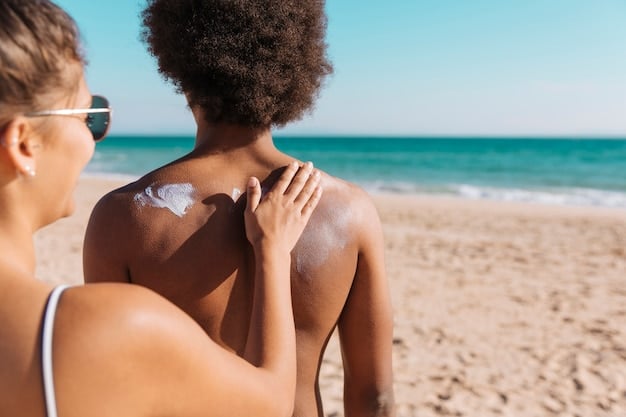
Essential Supplies for Your Beach First Aid Kit
A well-stocked first aid kit is your first line of defense against beach injuries. Here’s a list of essential items to include:
Having the right supplies can make a significant difference when treating common beach-related injuries. Make sure your kit is easily accessible and that everyone in your group knows where it is located.
- Bandages: Various sizes for cuts and scrapes.
- Antiseptic Wipes: To clean wounds and prevent infection.
- Pain Relievers: Over-the-counter pain relievers like ibuprofen or acetaminophen.
- Sunscreen: High SPF to protect against sunburn.
- Aloe Vera Gel: To soothe sunburned skin.
Each item in your first aid kit plays a specific role in treating injuries and providing relief. Regularly check your kit to ensure that supplies are not expired and that you have enough of each item. Being well-prepared allows you to respond quickly and effectively to any minor emergency.
How to Treat Common Beach Injuries
Knowing how to respond to common beach injuries can help prevent complications. Let’s explore first aid techniques for prevalent issues.
Understanding the proper steps to take when an injury occurs can make a significant difference in the outcome. Quick and effective action can minimize pain and prevent further harm.
Treating Sunburn
Sunburns are common at the beach. To treat a sunburn, move to a shaded area, apply aloe vera gel to soothe the skin, and drink plenty of fluids to stay hydrated.
Dealing with Cuts and Scrapes
Clean the wound with antiseptic wipes, apply an antibacterial ointment, and cover it with a bandage to prevent infection.
Handling Jellyfish Stings
Rinse the affected area with vinegar for at least 30 seconds to neutralize the venom and remove any tentacles. Avoid rubbing the area, as this can worsen the sting.
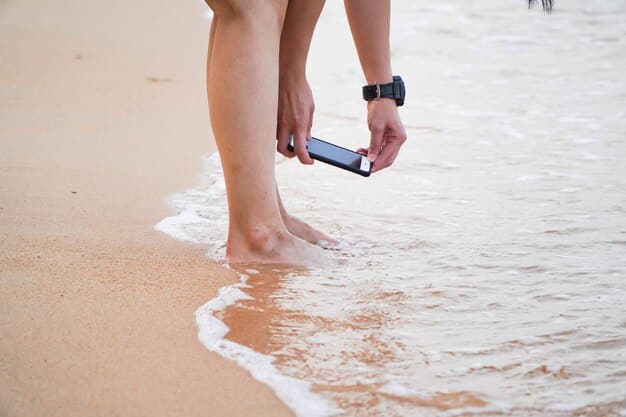
Preventing Beach Injuries
Prevention is always better than cure. Taking preventive measures can significantly reduce your risk of injury at the beach.
Implementing simple strategies can keep you and your companions safer while enjoying the beach. By being proactive, you can prevent many common beach-related injuries.
- Apply Sunscreen Regularly: Reapply sunscreen every two hours, especially after swimming.
- Wear Protective Clothing: Wear hats and sunglasses to protect yourself from the sun.
- Stay Hydrated: Drink plenty of water to avoid dehydration.
- Be Aware of Your Surroundings: Watch out for sharp objects, jellyfish, and other hazards.
Following these preventive measures helps keep you safe. By being mindful of your surroundings and taking simple precautions, you can enjoy a fun and safe day at the beach.
Staying Hydrated and Avoiding Heatstroke
Dehydration and heatstroke are serious risks at the beach, especially during hot weather. Knowing how to prevent and address these conditions is crucial for staying safe.
Maintaining proper hydration and understanding the symptoms of heatstroke can help you avoid severe health issues. Taking proactive measures ensures you can enjoy your beach visit without endangering your well-being.
Recognizing the Signs of Dehydration
Symptoms of dehydration include thirst, dizziness, and dark urine. To prevent dehydration, drink plenty of water or sports drinks throughout the day.
Recognizing the Signs of Heatstroke
Symptoms of heatstroke include high body temperature, confusion, and rapid heartbeat. If you suspect someone has heatstroke, move them to a cool place, remove excess clothing, and seek medical attention immediately.
Being prepared is essential. Stay hydrated, recognize the signs of heat-related illnesses, and take swift action if needed to ensure a safe and enjoyable beach day.
Beach Safety Tips for Families with Children
Bringing children to the beach requires extra vigilance and preparation. Here are some essential safety tips for families.
Taking the necessary precautions helps ensure that children have a safe and enjoyable experience at the beach. By being prepared and attentive, parents can minimize risks and keep their kids safe.
- Supervise Children Closely: Always keep a close eye on children, especially when they are near the water.
- Teach Children About Beach Safety: Educate them about the dangers of the ocean, such as rip currents and marine life.
- Use a Buddy System: Encourage children to swim with a buddy.
Parental vigilance is vital. By staying alert and educating children about beach safety, you can create a secure environment for them to enjoy the beach to the fullest.
| Key Point | Brief Description |
|---|---|
| 🩹 First Aid Kit | Essential for treating minor injuries like cuts and sunburns. |
| ☀️ Sun Protection | Use sunscreen, hats, and sunglasses to prevent sunburn. |
| 💧 Hydration | Drink plenty of water to avoid dehydration and heatstroke. |
| 🌊 Awareness | Be aware of surroundings to avoid hazards. |
FAQ
▼
A beach first aid kit should include bandages, antiseptic wipes, pain relievers, sunscreen, aloe vera gel, tweezers, and any personal medications. Consider adding vinegar for jellyfish stings.
▼
Sunscreen should be reapplied every two hours, and more frequently if you are swimming or sweating. Use a water-resistant sunscreen with an SPF of 30 or higher for best protection.
▼
Rinse the affected area with vinegar for at least 30 seconds to neutralize the venom. Remove any visible tentacles with tweezers, and avoid rubbing the area to prevent further irritation.
▼
Drink plenty of water or sports drinks throughout the day to stay hydrated. Avoid sugary drinks and alcohol, which can dehydrate you further, and seek shade during the hottest parts of the day.
▼
Symptoms of heatstroke include high body temperature, confusion, and rapid heartbeat. Move the person to a cool place, remove excess clothing, apply cool cloths, and seek immediate medical attention.
Conclusion
Being prepared with a beach first aid kit and the knowledge to use it can significantly enhance your beach experience. From preventing sunburns and treating jellyfish stings to staying hydrated and avoiding heatstroke, taking these precautions ensures a safer and more enjoyable time for you and your loved ones.

